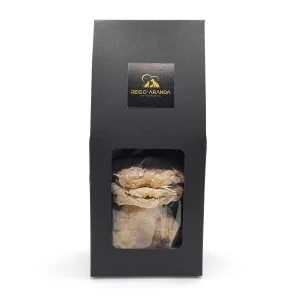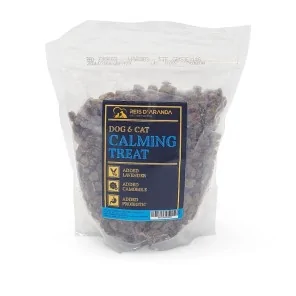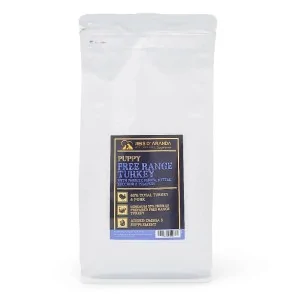Its name says it all: the Vienna blue rabbit comes from Austria. Not only is it beautiful with its shiny blue-grey...
THE SOUTHERN RUSSIAN SHEPHERD DOG
INTRODUCTION
The South Russian Shepherd Dog or South Russian Ovtcharka is a biting and distrustful dog towards strangers, undemanding, easily adaptable to various climatic and temperature conditions, vigorous, active, strong, balanced and impetuous.
ORIGIN OF THE SOUTHERN RUSSIAN SHEPHERD DOG
It originated in the Ukrainian steppes, in a region colonised by various streams of immigrants: Germans, Dutch and French, who came to these lands tempted by the offer of the Russian government, to farm on these lands and to be exempt from taxes and military duties.
Merino sheep were brought to this region from Russia, Poland, Austria and Spain in order to breed them. Along with the sheep came the men and their sheepdogs, such as the Gos D'atura, Komondor, Kuvaz, etc.
The crossbreeding of these dogs with the local Greyhound and Caucasian Shepherd breeds produced dogs of great stature and strength capable of facing the wolves that threatened the sheep, resulting in a definite type of dog which was called: ‘The Giant of the Ukrainian steppes’.
Europeans heard of them and called them ‘The Russian Shepherd of the South’. From the defined characteristics of these dogs the first breed standard was created. In 1917 the revolution took place and both sheep and sheepdogs died in large numbers. In 1930 the committee for the revival of the breed was established.
THE STANDARD OF THE SOUTHERN RUSSIAN SHEPHERD DOG.
GENERAL APPEARANCE : Robust, lean, solid boned and well developed musculature.
FAULTS: Fragile constitution, very weak bones, insufficient musculature, coarse or coarse in appearance.
SEXUAL TYPE: Well pronounced, according to sex. Males are courageous, stouter and more massive than females.
INSUFFICIENCY : Females with male characteristics.
FAULTS: Male of effeminate type; testicles, which have not descended into the scrotum.
IMPORTANT PROPORTIONS :
INDEX OF BONE STRUCTURE:
- Males: 17-19
- Females: 16-18
PROLONGATION INDEX (Format) : 108 - 110
FAULTS: Slight deviations from established norms.
FAULTS: Significant deviations from the established standards (square or very elongated shape).
HEAD : Elongated in shape, forehead moderately broad, occipital tubercle and zygomatic arches well marked. The naso-frontal depression is not very pronounced. The nose is large and black.
FAULTS: Coarse head, pronounced stop, protruding eyebrows, muzzle too short or too long, grey lips, grey or brown nose.
FAULTS: Muzzle narrow, loose, upturned, truncated in shape, pinkish nose.
TEETH: White, large, closely juxtaposed. The incisors are evenly set and close in scissor bite.
INSUFFICIENCES: Teeth too small and too wide apart, yellowish or prematurely worn. Teeth broken but not preventing the jaws from closing properly. Absence of premolars.
FAULTS: Anything that does not correspond to a perfect closing of the teeth in the form of scissors. Decayed teeth. Incisors not evenly set.
EARS: Relatively small, triangular in shape, pendulous.
INSUFFICIENCES: Detached ears.
EYES: Oval, set horizontally, sunken. The eyelids are thin and well laid back.
FAULTS: Light eyes.
FAULTS: Eyes of different colours, pink eyelids.
NECK: Lean, muscular, of moderate length. Set on high.
FAULTS: Neck too short, low set.
BODY
CROSS: Apparent but not high.
BACK: Straight and solid.
FAILURE: Loose or arched back.
FAULTS: Back sloping or curved.
LOIN: Short, broad, rounded.
FAILURE: Slightly elongated, straight or very rounded.
FAULTS: Long, narrow, drooping.
CHEST: Reasonably broad and slightly flat, deep.
INADEQUACY: Chest not sufficiently sloping (above the elbow).
FAULTS: Chest narrow, too small, barrel shaped.
BELLY: Moderately raised.
INSUFFICIENCES: Excessively deep set or sagging.
FEET: (front and hindfeet) : Oval; large, well arched, covered with long hair.
INSUFFICIENCES: Feet flat, goose-foot shaped.
GAIT / MOVEMENT: The movements are free and wide. The natural movements of this dog are trot and canter. At the trot, the legs move in a straight line, with a slight approach of the midline. The joints of the forelegs and hindlegs rise freely.
INSUFFICIENCES: Slight lateral deviation in the movement of the legs; insufficient lift of the joints.
FAULTS: Movements are not executed with ease.
COAT :
HAIR: Long (10-15 cm), thick, dense, abundant, slightly wavy. Uniform length on head, limbs, chest and tail. The undercoat is well developed.
FAULTS: Coat straight.
FAULTS: Short coat, springy texture.
COLOUR: Often white, but may also be white and yellow, straw, greyish (ashy grey) and other shades of grey; white slightly marked with grey; grey markings.
FAULTS: Coat black, red, brown, heavily spotted.
SIZE :
HEIGHT AT WITHERS
- Males - minimum 65 cm.
- Bitches - minimum 62 cm.
INADEQUACY: Size less than 65 cm in males and less than 62 cm in bitches.
FAULTS: Size less than 60 cm in males and less than 58 cm in females.
FAULTS: Any departure from the foregoing points should be considered a fault and the seriousness with which the fault should be regarded should be in exact proportion to its degree and its effect upon the health and welfare of the dog.
ELIMINATING FAULTS
- Aggressive or fearful dog.
- Anything which does not correspond to a correct closing of the jaws.
- Short or straight coat.
Not all shades of coat have been taken into consideration in the current standard.
Any dog showing clear signs of physical or behavioural abnormalities should be disqualified.
N.B. Males should have two apparently normal appearing testicles fully descended into the scrotum.
THE HEALTH OF THE SOUTHERN RUSSIAN SHEPHERD DOG
Information on the most common diseases in the South Russian Shepherd Dog is limited. Even so, it is likely that he is predisposed to some of the more common disorders in dogs such as:
- HIP DISPLASIA: a bone disease consisting of a maladjustment between the head of the femur and the acetabulum, both articular surfaces of the hip joint. This poor congruence produces laxity at the joint level, which makes it easier for the femoral head to move, damaging and progressively weakening the joint. This causes instability in the hip and, in the long term, lameness, osteoarthritis, pain and muscular atrophy.
- ELBOW DISPLASIA: usually occurs in puppies between 4 and 6 months of age, just when they reach the peak of their growth spurt. These are lesions that appear, simultaneously or not, in the elbow joint between the three bones involved: the humerus, ulna and radius.
- STOMACH TORSION: occurs when food is ingested quickly after intense exercise, a state of agitation or simply by eating and drinking voraciously. The stomach dilates and fills with air, which may predispose it to rupture, causing a veterinary emergency due to a blockage of irrigation, resulting in signs such as hypersalivation, depression, unproductive vomiting, pale mucous membranes, anorexia, pain, severe discomfort, shock and faintness.
THE PERSONALITY OF THE SOUTHERN RUSSIAN SHEPHERD DOG
The Southern Russian Shepherd Dog is a very good home guard dog because of his dominant nature and his reserve with strangers, which makes him constantly alert. They are affectionate, but do not interact too much with their handlers. They are courageous, tenacious, lively and distrustful dogs. They may show aggression if they do not feel comfortable or confident with someone or some action, even if it is their handlers, whom they will not hesitate to attack. However, they are generally good with their family, including children, whom they will protect from any threat. They are also balanced, energetic, strong, impetuous and responsive.
If these dogs become bored, for example if they remain inactive or alone in the house for too long, they can become destructive, compulsive, barking and nervous. For this reason, it is important that they maintain a good level of daily physical activity so that they do not develop these behaviours. The help of an ethologist or trainer can be sought, if necessary.
CONCLUSION
Southern Russian Shepherds, as we have pointed out, are distrustful dogs that tend to be violent or aggressive towards strangers or when threatened, so this aspect should be worked on by providing them with the correct education from puppyhood.
Leave a comment
Log in to post comments
















